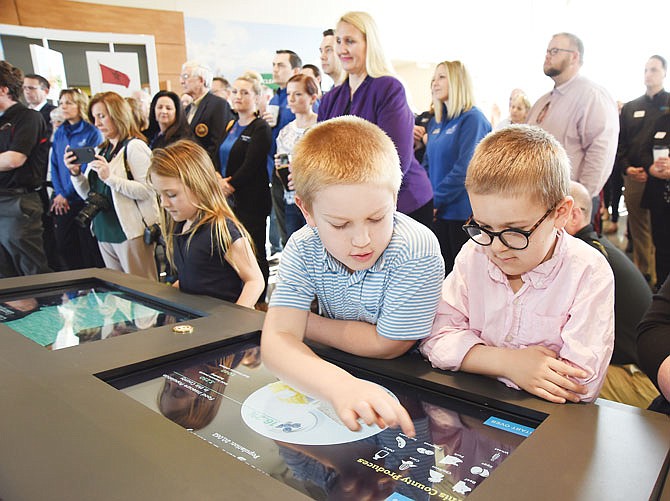A newly opened building in Jefferson City is intended to be much more than a new home for Missouri soybean associations.
"The main part of this whole idea was for education (of the public)," something that is always at or near the top of farmers' minds when surveyed, Missouri Soy Merchandising Council Chairman Robert Alpers said of the new Center for Soy Innovation at 734 S. Country Club Drive.
"I think we in agriculture realize people are getting so removed from ag that they just don't know where their food and their safe food is coming from," Alpers added.
The Merchandising Council, Missouri Soybean Association, Biodiesel Coalition of Missouri, Foundation for Soy Innovation, Missouri Farmers Care and the Ag Education on the Move programs are among the organizations that have a shared home in the Center for Soy Innovation that celebrated its grand opening Thursday - a building designed to incorporate soy-based materials, including insulation, paint, the fuel in its furnace, carpet and countertops.
Inside, the center is a showcase for the agronomy of soybeans - what products soybeans and their oil can be used for and where the future of the industry may be.
There are exhibits showcasing the life cycle of a soybean plant, screen displays and a monitor showing commodities prices.
Soybeans were Missouri's top agricultural commodity in 2016, bringing in more than $2 billion in farm receipts - almost 24 percent of the total farm receipts in the state that year - ahead of more than $1.6 billion for corn and $1.5 billion for cattle and calves, according to the Missouri Department of Agriculture.
Missouri exported almost $282 million worth of soybean meal that year - the state's second-biggest agricultural commodity export, behind $328 million of pork and pork products.
Eighty percent of a soybean is meal, and the other 20 percent is oil, according to a poster inside the Center for Soy Innovation.
In the United States, 97 percent of the meal is used to feed poultry and livestock, and the other 3 percent is used in food products such as alternative protein sources and soy milk.
About 61 percent of the oil from soybeans is used for cooking oil and food additives, 31 percent for biofuels, and the other 8 percent for industrial uses including paints, plastics and cleaners.
The building's opening ceremonies Thursday morning featured soy doughnuts.
Securing the future of Missouri's agriculture industries will take more than sweetness, though.
"We can't do that on the farm," Gov. Mike Parson said at the center's grand opening of bridging urban and rural communities to strengthen the future of agriculture.
"The future won't be out there on the farm," but with younger generations learning about technology to improve yields, Parson said, adding: "God's not going to make any more land."
"Most importantly, we want other groups (besides farmers) to come and take a tour of our building, of our education center," Alpers said.
He said the center is a "living demonstration" of the many uses of soybeans, beyond livestock feed.
The center cost approximately $4 million to build - constructed without debt, Alpers said.
"We did it through savings; there was no debt to farmers," he said, adding the Soybean Association partnered with the Merchandising Council and industry and other private partners.
Staff has been in the building since November, but "we were still doing finishing touches right up until yesterday," Alpers said.
The center and its educational outreach focus is unique among other agriculture industries and states, he noted, adding: "We're actually, if not the only, we're one of the very few that have the education part to it."

